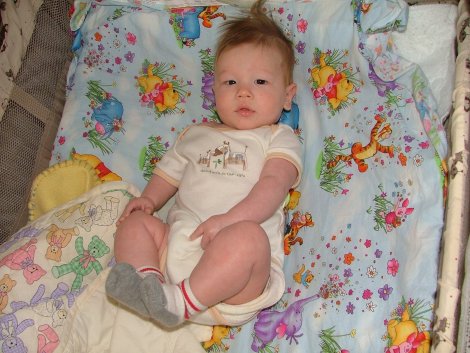Baby Hair Care

Babies have even more hair problems than adults do. They might have cradle cap, hair loss, color change and several other imperfections. While some parents prefer just to let it be, saying that a baby will “outgrow” these bad-hair days, others look for a solution and appropriate hair care products.
People are usually very happy when a baby is born with a head full of hair, so it frustrates them if the hair falls out in the first weeks of the baby’s life. It is a normal thing which happens with many babies due to hormonal changes after they are delivered. There should not be any worries, because the hair will grow back almost as soon as it fell out.
It is even more common when babies have bald spots on the back of their heads. It happens because parents are advised to place sleeping babies on their backs to decrease the risk of SIDS (sudden infant death syndrome). There is an easy solution to this problem: when the baby is awake and a parent can supervise closely, the little one should have some “tummy time” which is not only beneficial for hair, but for the development of stronger muscles as well. Specialists say that babies get to like this position if they are placed on their bellies from the very beginning of their lives.
Newborn babies can have cradle cap: it is scaling skin on the scalp that flakes off. It does not bother babies, does not hurt or itch. While it is all right to do nothing at all, because the flakes will eventually go away, many parents are concerned about the problem. There are several ways to deal with cradle cap and reduce flaking: massaging the scalp gently, washing hair every other day, using essential oil on the scalp, and combing often.
If the condition is severe, doctor’s consultation might be important. Such problems as scalp eczema, scalp psoriasis, and histiocytosis might appear to parents as simple cradle cap.
Some babies are born without hair and this is normal too. As long as the scalp skin looks good (there is no redness, scaling, or oozing) parents should not have any worries. If the mentioned problems occur, a doctor will prescribe a topical ointment that should fix the problem. If the hair does not appear by the time, the baby is two years old or its growth is insignificant, the doctor should look at it.
A lot of things change in baby within the first few months and even years. Hair is also a subject to change. Usually baby hair is thinner and lighter by weight, so it gets curly easily. After first 2-3 years it might become thicker, straighten up and even change color. Parents should look at their own baby pictures to understand that they went through such changes and it is normal for their baby to do the same.
Since the hair might be curly, it gets tangled easier. However, even this should not be a matter of despair. Using a conditioner on hair after washing always helps to “untie” those messy knots. Besides, since there is not much hair, parents do not need to use as much shampoo as they would on their own hair.
Speaking of washing baby hair, it is important to mention that special baby shampoos would be the best solution. First of all, they are “tear-free” because they use special mild detergent which does not sting eyes if a drop of the shampoo accidently gets there. Secondly, many shampoos are designed with natural ingredients now, using essential oils, mild herb extracts, and natural fragrances.
Little baby’s hair might give a lot of trouble and require close attention, but a patient parent will be able to take it under control easily!
Jacklyn Jackson
Posted on May 1, 2010
Filed Under Hair Care, Hair Loss
Comments
Leave a Reply
